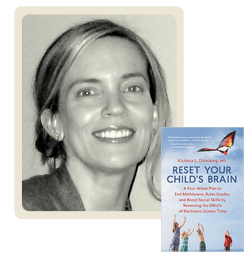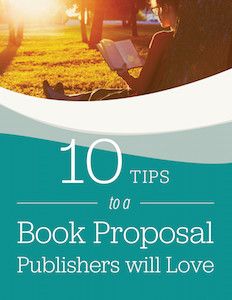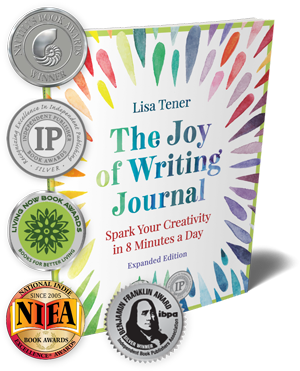 Do you feel overwhelmed when thinking about how to write a book proposal?
Do you feel overwhelmed when thinking about how to write a book proposal?
If so, you’re not alone.
One key is to break it down into small bits.
Before you write your proposal, you need to get very clear about the book you’re writing.”
Here are 5 first steps to write a successful book proposal, steps that can help you choose the write book, save time and write a more effective proposal. Plus, these steps will help prevent you from getting overwhelmed.
[bctt tweet=”5 First Steps to Write a Winning Book Proposal…”]

- Get Clear on Your Vision and Goals: It may sound simplistic, but I’ve met many an aspiring author who started out writing the wrong book because they skipped this step. If you skip this step you may end up trying to fit two books into one, or writing a book that’s more complicated than it needs to be, or one that isn’t going to get you where you truly want to go. So, take a deep breath and have fun with this step. This step is about imagination, envisioning the results of your book. This step should inspire you. What a great way to start!
- Ask, “Who am I writing for?”: Most first-time authors try for too broad an audience. The key is to be very clear about your core readers. If you try to write for everyone, no one will know the book is for them! When you are clear on a core readership, your title, anecdotes, language, examples, metaphors will all speak to your readers and resonate for them. You’ll know just what to put in each chapter and what information your readers need to know. You’ll know how much science or math or medicine to include and what to assume your readers know. You’ll address the concerns of your readers and understand their point of view, their pain, their goals, their dreams. When you try to go for too broad an audience, many times, you end up with no one. The crazy thing is, when you write for this core audience, other people will find your book as well.
- Research the Market: Talk to your core readership. Ask them about their experiences. Find out what they think and want. Ask them about the books they’ve read on the subject. What’s missing for them? Blogging can be a great way to get to know what topics get your readers excited (you’ll get more comments and social shares when they’re engaged).
- Brainstorm: From what you learn about your market, jot down ideas about what you want to put in your book and what may be better left unsaid. List ideas for features (science sidebars, experiential exercises, questions for reflection, cartoons, graphs, pictures or quotations), tone (playful, scientific, academic, nurturing, humorous or adventurous) and style (accessible, formal, short). Keep thinking from the point of view of your core readers and what would make the book most useful for them.
- Hit the Bookstore—Real and Virtual: Sure, an Amazon search has its place. You can quickly purchase ebooks and compare them to the book you want to write. Compare the books that yours would compete with and ask how they compare to what you have in mind. What features do they have? What’s the tone? How accessible or conversational are they? What works with these books? What could better serve your readers’ needs? Now, head to your favorite bookstore. Check out other books on your subject. In what sections do you find them? Self-help and psychology? Or do you find a few surprises in other sections as well? Which books seem to have
 struck a chord? Why? When Tara Mardigan, co-author of Real Fit Kitchen first began work on a book proposal, she took up my bookstore challenge. After sifting through books, she sat on a bench to listen and observe her potential readers in action:
struck a chord? Why? When Tara Mardigan, co-author of Real Fit Kitchen first began work on a book proposal, she took up my bookstore challenge. After sifting through books, she sat on a bench to listen and observe her potential readers in action:
“A woman in her late twenties said aloud to her friend, ‘Oh, I like that this book has recipes but there’s no way I’d have any of these ingredients in the house.’”
“A forty-five-year-old man told his girlfriend, ‘I just want to have permission to eat the stuff I want. Can any of these books help with that?’”
What will you learn from watching your potential readers?

As you can see, these first 5 steps to writing a book proposal are loaded with adventure, permission to get creative and opportunities to connect with others. Enjoy the process and you’ll end up writing a terrific book proposal. I often like to say that the more fun you have writing your book (and proposal), the more fun your readers will have when they read it.
For more tips on writing a winning book proposal, download my free report, 10 Tips to a Book Proposal Publishers Will Love.
And feel free to ask questions below!



Hi Lisa,
Exciting news – almost! I’ve found an agent who loves my book and will represent me IF “I have substantial social media numbers by mid September”. To be honest, I’ve been focused on writing and editing and reorganizing and rewriting my collection of essays which captures many of the things Baby Boomers like me are confronting in life – children leaving for college, parents needing more help, getting reacquainted with spouses, reinventing careers, that sort of thing. But now I need to devote my time and energy to the marketing side of things and since you’re so knowledgeable about this aspect of the business, I’m asking for your guidance.
What would you recommend in terms of social media? Would Facebook work and if so, should I set up a separate page to promote the themes of my book? Should I add Twitter, Instagram, a website, Linked In, something else?
And what numbers of followers would you consider to be “substantial” enough for a general interest book to be attractive to a large publisher?
Rita
Hi Rita,
That is exciting news (and, knowing you, not surprising).
Firstly, rather than a book website, you should have an author website with a blog (if you have one, I am not finding it online when I search). To publishers, this is a must have, and is also the place you will often send people from social media. It’s the real estate you own on the internet vs. as my colleague Rusty Shelton often says, “rented real estate” like social media, which you have no control over and which you put you back to square one tomorrow if rules change or a particular platform loses its audience.
Here’s the latest on Facebook: it’s generally all “pay to play” so you would have to advertise to get people to your page. And even then, not much is likely to happen. If you use Facebook, groups are the way to go (at least right now) because people who join a private group will be alerted whenever you post there. Also, Facebook Live videos can sometimes work to reach people.
Having said that, it’s a bit of a slog on facebook without a budget and a higher ticket item than a book to sell (particularly if you are traditionally published and get a modest percentage).
You might do better on Twitter and/or Instagram. I don’t know much about Instagram, but for Twitter, you can do some automating (sending out relevant quotes) and you’ll need to do some following and unfollowing once or twice a week to get your numbers up quickly. There’s no magic bullet, but I would suggest you get a hold of Frances Caballo‘s books on social media for writers, particularly any she’s recently udpated. And I would follow her advice. She’s and excellent resource.
In addition, Cathy Turney has a great book for getting started on Twitter and building a following quickly. The book focuses on increasing your following quickly without as much focus on engagement, so you’d want to supplement with sharing blog posts (of others in your field and of your own) to add more meaning and engagement. Cathy’s book is Get 10,000+ Twitter Followers.
I recently asked Rusty what media tend to result in the best book sales and he said podcasts! So, consider trying to get on a few podcasts or put that in your promotion plan.
Maybe you can talk books with our mutual friend Robin! And definitely ask her about Podcasts.
For Twitter, do follow your journalist colleagues, especially those who write about the topics in your book. Consider writing a few articles on these topics (maybe you already are), in addition to posting on your own blog.
So, back to your numbers question. There is no magic bullet number. However, if you are looking for a large publisher, they may likely want to see pretty big numbers, in the tens of thousands. However, smaller niche publishers, especially those who have a following of their own may not be quite as picky.
A recent conversation with an acquisitions editor at a mid-sized publishing house that specializes in self-help and psychology books said, “Emails are good, some thousands. Social media needs more like 5-10,000 followers.” So that’s a general minimum, but again the really large publishers tend to want to see more than that.
I hope I’ve answered your questions fully, but feel free to ask more! And thanks for asking here on the blog where it can be shared with others.
Hi Lisa,
Thank you, thank you for all your helpful advice. I will keep you posted on my progress and I’m sure there will be more questions along the way.
My best,
Rita
You’re welcome, Rita. Good luck and let me know how it goes. And feel free to tag me on social media or let me know by email when you have a new blog post or article I can share.
Hi, Rita and Lisa!
Congrats on your book Rita! I concur with Lisa and will add that Twitter is the fastest, easiest, least expensive way to target your audience and build platform (those numbers agents and publishers want to see). Facebook and Twitter are the two top social media sites for promoting writing, but as Lisa mentioned, Facebook has changed things around sooo much that it is now really pay-to-play and extremely time-consuming (groups take a ton of effort, and they’re the only way you’ll get “organic” interaction).
Twitter, on the other hand… You can add hundreds of followers each week and only spend about ten minutes a day doing that. But it takes time to get up-to-speed. I outline all that in my book that Lisa mentioned – lots of screen shots and step-by-step directions.
I would be happy to do a free consult with you on the phone. Just email me at Cathy@CathyTurney.com and put “TWITTER” in the subject line so I don’t blow past it!! You can do it!!
Oh, Cathy, that is so generous. Thank you!
Yes, I agree. That is so generous and I will be in touch with Cathy soon.
Thank you!